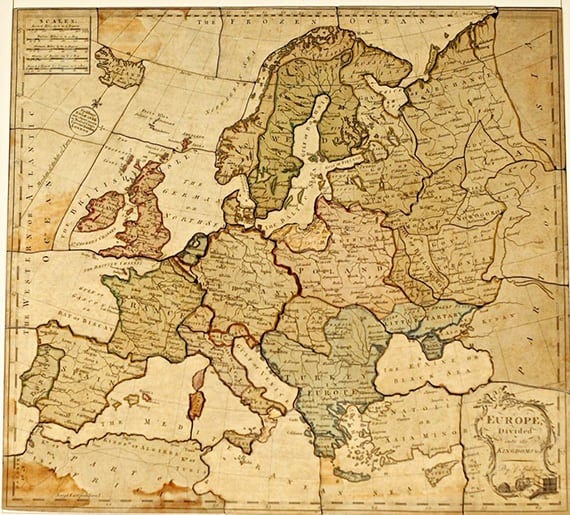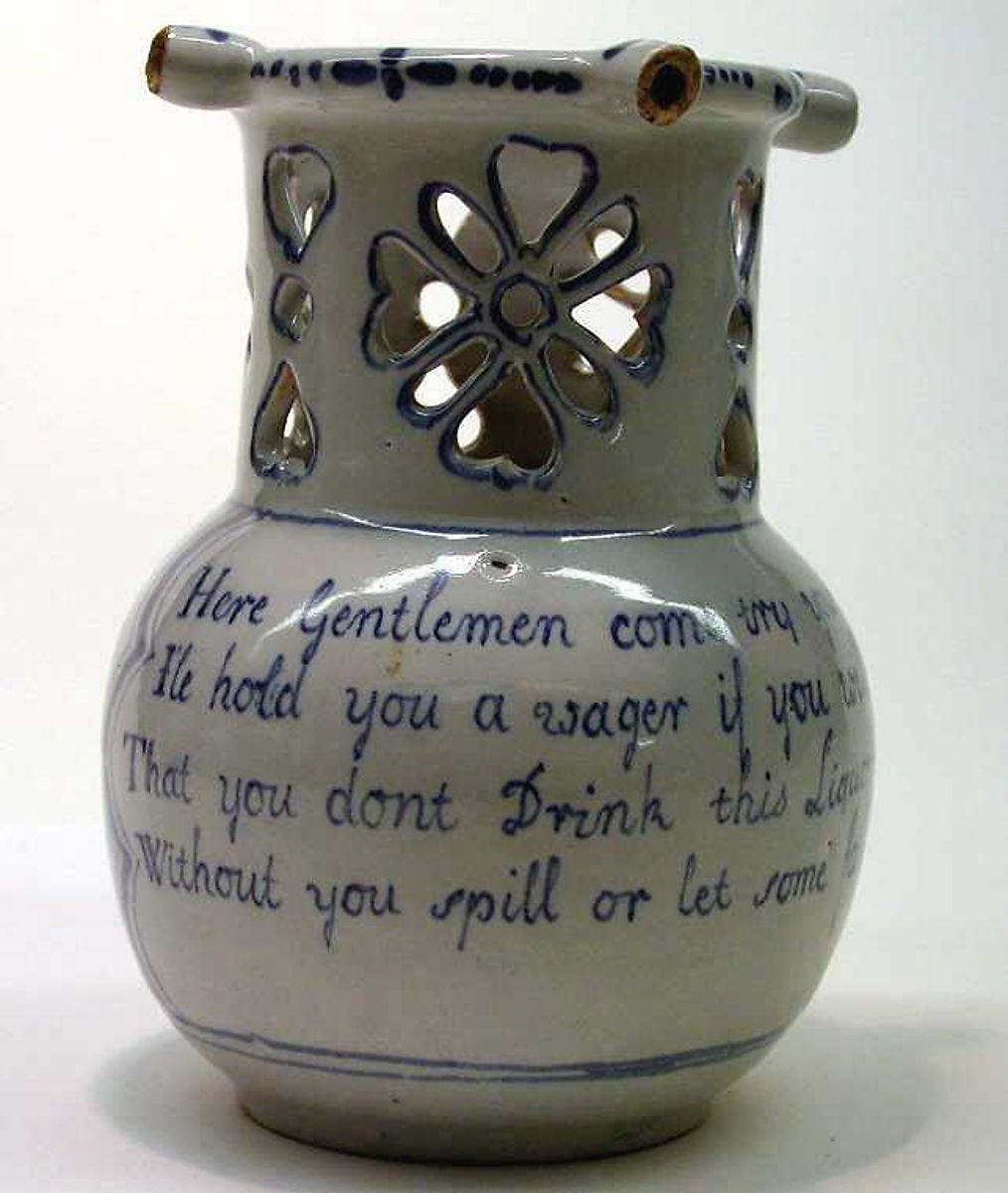#96 Puzzling design
Jigsaws, puzzle jugs and more 🧩
Design Lobster #96 is here to, well, puzzle you with some designs that deliberately set out to perplex or baffle those using them. From the history of the jigsaw puzzle to a tricksy 18th century jug. Put on your thinking cap and read on… 🧐
✨Enjoying Design Lobster? Please share it with a friend, colleague or fellow designer.
Question: Who invented the first jigsaw puzzle?

Jigsaw puzzles were one of the surprise hits of 2020 as rolling lockdowns led to many of us seeking familiar comforts for those long evenings spent at home. In the UK, sales were up 38% year on year and I confess contributing to this mini-boom. In a world turned upside down, the process of bringing order to so many scattered pieces had, I found, a therapeutic effect. But what is the humble jigsaw’s history?
There is some uncertainty over the origin of the first puzzle, though the inventor is generally considered to be John Spilsbury, who was an apprentice to Thomas Jeffreys, Royal Cartographer to the court of George III and Queen Charlotte of England. He began making so-called Dissected Maps for the royal children in the 1760’s by mounting maps onto hardwood and cutting them into their constituent countries using a marquetry saw.
It seems likely however that the real originator was a French woman called Jeanne-Marie Le Prince de Beaumont, a passionate educator whose extensive writing on children’s education was read by Queen Charlotte. She advocated using maps like this as an educational aid for the young, a recommendation the royal household seems to have taken up.
It took puzzles to be translated to paper-board rather than wood for their popularity to really take off, become a mass-produced and affordable favourite during the Great Depression. Fun fact: the name “jigsaw” puzzle did not start to emerge until the 1880s to reflect the tool used to cut up the wooden variety. This is however a misnomer as fretsaws, not jigsaws, were used for cutting!
Design takeaway: What properties would your design have if you dissected it?
🐘 We admired a famous jigsaw by designer Enzo Mari in Design Lobster #46
Object: Puzzle Jug

This dainty little jug would have provided much amusement for the drinkers in an 18th century inn. With a perforated neck and mysterious array of holes, jugs like this would spill their contents on an unsuspecting drinker unless they knew the secret of how to operate them. This would vary from jug to jug, but generally the trick was to cover up some of the holes in the rim with your fingers and then suck at another so that a hidden tube (sometimes in the jug’s handle) could be used like a straw to draw liquid from the bottom.
The so called “Taunt” inscribed on the side of the jug gives us a sense of the social life it would have played a part in:
Here Gentlemen come try your skill
I'll hold a wager if you will
that you don't drink this liquor all
Without you spill or let some fall
Perhaps because I spend so much of my life trying to make my designs feel simple, friendly and easy-to use I have a perverse fondness for design that sets out to to achieve the exact opposite! Artefacts like this Puzzle Jug reveal the more complex truth that sometimes we sometime prefer to be challenged (if only a little bit) by the things that we use.
Design takeaway: How could you add some trickery to your design?
🏺This designer at the V&A Museum, London recreated a puzzle jug from scratch - hypnotic to watch!
Quote: “Clutter and confusion are failures of design, not attributes of information.”
– Edward Tufte, author of Envisioning Information
Edward Tufte presents a counterpoint to all the puzzlement in this week’s issue. I nearly entirely agree with him, but might suggest adding the word Unintentional to the quote’s beginning. As the designs we have looked at this week demonstrate, sometimes the satisfaction of clearing up confusion is just what we are seeking!
Have a great week,
Ben 🦞
Enjoyed this week’s Design Lobster? Let me know by clicking the heart button.
👇

